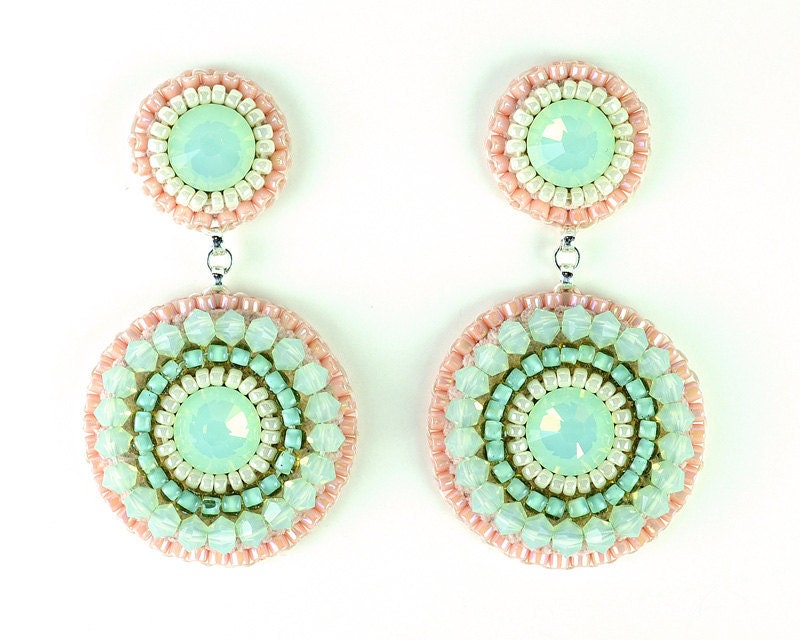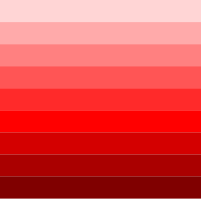The first step in talking color for your wardrobe is to determine the palette of colors that look best on you personally. At its most basic level, this means a cool palette or a warm one. For those new to color analysis, see this simple explanation.
Once you know if you are cool or warm, think of some other factors. Consider the type of wardrobe (business wardrobe for work, or a casual one), the season (spring, summer, winter or fall), and your location. Take a look through your closet. Do you already have a color story? If so, do you like it? Or maybe just parts of it?
Once you know if you are cool or warm, think of some other factors. Consider the type of wardrobe (business wardrobe for work, or a casual one), the season (spring, summer, winter or fall), and your location. Take a look through your closet. Do you already have a color story? If so, do you like it? Or maybe just parts of it?
Begin by choosing your neutrals. This part is easy because the number of neutrals is fairly limited. Neutrals that look best against cool complexions are black, white, and various shades of grey. Neutrals that work well with warm complexions are cream and variations of brown. If you are on a really tight budget, I recommend trying to work with at least some of what you've got going on already, especially in the more expensive items. For example, if all of your cool weather shoe options are black, definitely include black as one of your color story neutrals.
Now, to choose the dominant and complementary colors. One way to go about choosing your color story is to be inspired by something around you. Maybe it is a favorite painting, a fashion collection, or your environment. Or you could look to some of the tried and true methods of color theory, methods of relating colors that are visually pleasing. In addition to aiding the creation of a color story, these methods might help you discover outfits that you have never even considered. Bonus? You will probably find this info very helpful when making home decorating decisions! So here we go.
The first pairing method is to use analogous colors, that is, colors that sit next to each other on the color wheel (see Example 1). A second way to create an interesting combination is to use colors that are opposite each other; these colors are called complementary (see Example 2). A third combination is the use of monochromatic colors. A group of colors is considered monochromatic if it consists of the shades, tones, and tints that are possible from one color (by the addition of black, white, and grey, respectively) (see Examples 3 and 4).
Now, to choose the dominant and complementary colors. One way to go about choosing your color story is to be inspired by something around you. Maybe it is a favorite painting, a fashion collection, or your environment. Or you could look to some of the tried and true methods of color theory, methods of relating colors that are visually pleasing. In addition to aiding the creation of a color story, these methods might help you discover outfits that you have never even considered. Bonus? You will probably find this info very helpful when making home decorating decisions! So here we go.
The first pairing method is to use analogous colors, that is, colors that sit next to each other on the color wheel (see Example 1). A second way to create an interesting combination is to use colors that are opposite each other; these colors are called complementary (see Example 2). A third combination is the use of monochromatic colors. A group of colors is considered monochromatic if it consists of the shades, tones, and tints that are possible from one color (by the addition of black, white, and grey, respectively) (see Examples 3 and 4).
 |
| {source} |
1. ANALOGOUS COLORS: RED and MAGENTA
 |
| {source} |
2. COMPLEMENTARY COLORS: MINT and CORAL
 |
| {source} |
3. MONOCHROMATIC COLORS: RED and MAROON
 |
| {source} |
4. RED EXPANDED TO ITS MONOCHROMATIC POSSIBILITIES
 |
| {source} |
For more color inspiration, check out this site. I just chanced across it the other day and I have to admit, I'm in love. Select any color from the list on the right to view various color stories including that color, and an outfit demonstrating each story.
It might seem a bit constricting at first, but building your wardrobe (however loosely) around a color story has many benefits. It will make creating outfits much easier; most likely you will be able to achieve a "pulled together" look effortlessly, as the pieces of your wardrobe work together smoothly. You will also need less, because you will get more use out of each article, thus saving you money and space!

Hi Mary,
ReplyDeleteThanks for beginning this new series! Can't lie that I wasn't checking back to your blog multiple times a day to see if you posted:)
Question about choosing a neutral color... My veins are between blue and green and I love both combinations of greys/blacks/white and creams and browns. I would say that's have a few basics of each color in my closet. Should I try and narrow done my options?
Thanks,
Margo
Hi Margo! Thank you for commenting; I don't think people understand how much I love love love them! It sounds like you need to do the color swatch test with a friend. Yo u might be one of the few who can wear both, but its good to get a second opinion on what looks best. Also, Margo, are you on fb? If so, find the with my sisters page and we can more easily MSG back and forth. If you want I could ask you some further questions regarding your coloring. -M. PS I never got the pics you emailed!
DeleteLove the comments, I mean :)
ReplyDeleteMary, this is an excellent idea for a post! I love it because I think it could really simplify your options and give you more flattering outfits. I always notice when I am traveling I stick with a swatch and getting dressed is so much easier : )
DeleteThank you, Sarah! Yes, I've been trying to implement this more in my wardrobe, and it does make things much simpler. I hate it when I can only wear this shirt with that skirt, and so forth!
DeleteHi Sarah, that is so true about traveling... I should use that to help narrow down my options!
DeleteMargo
Hi (linked over from Dwija's blog) - I'm enjoying these posts! As to having a "color story", I was already doing this unintentionally, but I never really thought of it this way. I LOVE shades of teal and aqua, so I naturally pick those in a lot of my clothes and accessories. So often, I get complimented on how well-coordinated my outfits are. I always answered, "well, when almost everything you own is the same color, it's not too hard!". It's good to hear that this might actually be a good thing.
ReplyDelete